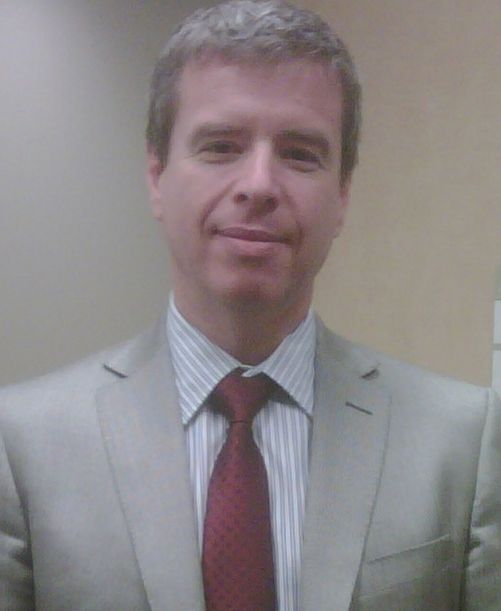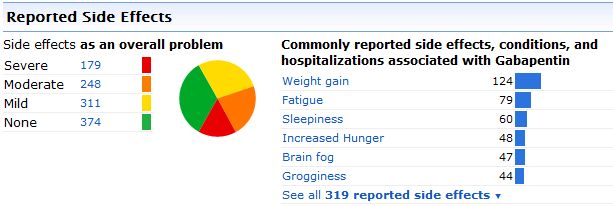You may recall that in July we shared a video about Doctors 2.0 and You, a conference focused on how physicians are using web 2.0 technology. Today we’d like to present a real-life example of this concept: Dr. Jim King, MSc, MD, FRCPC. A pediatrician at the Children’s Hospital of Eastern Ontario (CHEO) in Ottawa, Dr. King runs a number of different clinics for rare diseases. He also serves as the hospital’s Medical Director for Informatics. Find out how he has used PatientsLikeMe as part of his practice and much more in our interview below.

1. How did PatientsLikeMe come to your attention?
We were doing a presentation a number of years ago, in 2006 I guess. We were talking about a number of things, but more specifically the use of mobile technology in healthcare and research as well as personal health records. So we were sort of working up some information and then we came across PatientsLikeMe. We were basically looking at some of the business models around personal health records, specifically around Microsoft Vault and Google Health and those things, and we thought PatientsLikeMe had a little bit of a different spin.
2. As a pediatrician, how have you used PatientsLikeMe?
I specifically used it in one of my clinics. I follow a number of teenagers that have orthostatic intolerance and also chronic fatigue and fibromyalgia and other conditions related to orthostatic intolerance. I get a lot of questions about different medications. The families are very well versed in information and are always looking for new sites to visit. So I will often direct them to PatientsLikeMe. You can find sites with support groups, but you never really know how many people are involved. Then people are going online and looking up things by themselves. But I felt that all the information being presented back through PatientsLikeMe was pretty good.
One example was a 16-year-old patient with fibromyalgia. Their family doctor had recommended she take gabapentin based on a news article. So in the past, and even currently, one of the ways I would look at this situation and get as much information as possible would be to go on sites like PubMed or Bandolier, the Oxford site in the UK, and try to pull together what worked and what didn’t work. Some of these sites are pretty good because often they will tell you what the positive outcome is. But one of the difficulties is that they don’t always tell you what the adverse affects are.
It was nice because I sat down with this patient and we pulled up PatientsLikeMe. And I think at that time there were a couple hundred patients that had been on gabapentin and the actual number that had side affects, I’m just recalling now from a few years ago, was equivalent or slightly greater than the amount who had actually benefited from the medication. So we made a decision at that time not to actually go on gabapentin. Instead, we tried some other things. It was very helpful in my daily stream of care to be able to do that.
3. We have a large community of fibromyalgia and chronic fatigue syndrome (CFS) patients at PatientsLikeMe. What are some of the challenges for adolescents with these conditions?
There are multiple challenges. I think the first challenge is that it’s really an undefined condition. There isn’t a specific diagnostic test, so labeling is a bit of a challenge. Sometimes it takes time for people to understand the impact. And, it’s the same as any chronic illness that doesn’t have overt physical symptoms. You know, everyone looks normal but they feel terrible. When you’re feeling bad all the time physically, or a lot of the time physically, that can make you feel unwell mentally. So having a place where you can go to actually hear that and learn how other people are coping and dealing with it is a big benefit. It certainly shouldn’t hurt, right? And there can be some pretty positive effects from having a community as well.
We are making a diagnosis based on a constellation of symptoms so there are probably a lot of different disorders or a lot of different reasons why someone has a diagnosis of chronic fatigue. So because it’s such a heterogeneous group, there are going to be a lot of different management and therapeutic approaches. So, you really need a large number of people to start understanding what’s working and what’s not working. And again, compiling and pulling that information together is quite beneficial.
4. Do you have any thoughts on how large online data sets at PatientsLikeMe or other websites could shape the future of healthcare?
You can’t manage what you can’t measure, right? That’s quite obvious. So, if we can do better measurements along knowing what your population is, but have something on what the actual outcomes are, that should be beneficial in the long run. It’s like anything. You have to know your population really well. And if you can define your population really well, then these large data sets, and I would say sites like PatientsLikeMe, can be quite powerful. It is a definite movement and force going forward, for sure. You need thoughtful stewardship for this, and you need a thoughtful ability to analyze the data and make clinical sense from it.
5. Anything else you want to add about PatientsLikeMe?
For me, there are two other things. First, the actual connections for people from sites like this are quite important - you know, the support group piece. And also you will have people with multiple problems and they may be doing something that seems to be a bit unique but is beneficial. Also, say you have a condition which is rare and there are only a couple of hundred cases in the world. You learn so much more when you start connecting and you find that maybe a problem, like fever, is a normal part of the illness and people just haven’t gotten together to figure it out. Being able to share that information relieves a lot of stress for families – we hate the unknown – and is quite powerful.
Second is the explosion in clinical information, especially the way things are going with genetics, molecular biology and bioinformatics. The ability to be diagnosed or know your risk and response to treatment with one or multiple diseases based on your genetic material is fantastic. While there is tremendous potential, this is extremely complex and what we are going to see is that our phenotypes, our observable characteristics or traits, may or may not match our genotypes, the inherited instructions within our genetic code. I think sites that can link large groups are going to become more powerful.
So, as we are pulling all those things together, it will be important to have a source where you can actually be able to make sense of it and make it a lot easier to get some prognosis for guidance for people about what’s going to happen. Because a lot of times, you’re sort of in the dark with a lot of uncertainty for some conditions. So I think pulling that information together can be quite powerful and liberating.

